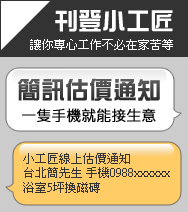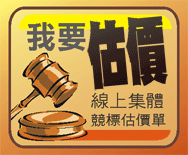居家大小事,找它有丿步-小工匠工程網


LIANSUO CONSTRUCTION TECHNOLOGY CO., LTD.
店家文章分享
From Contamination Control to Operational Resilience: Standardized Response Strategies for Cleanroom Firestopping
In high-risk, high-cleanliness semiconductor manufacturing environments, firestopping systems have long evolved beyond mere structural components for blocking fire spread. They are now crucial lines of defense for maintaining cleanroom contamination control, pressure stability, and rapid post-disaster recovery capabilities. Should a fire lead to smoke backflow, chemical leaks, or HVAC system failure, it can inflict devastating damage on product yield and production capacity. Therefore, the design and validation of firestopping must transcend traditional concepts and advance towards standardization, systematization, and traceability.

Firestopping Regulations and Requirements
- FM Global Standards: According to FM Data Sheet 7-7, “Semiconductor Manufacturing Facilities,” all openings penetrating firewalls, floors, and ceilings must utilize FM Approved firestopping materials and be installed by FM 4991 Approved contractors. The fire resistance rating must be equal to or higher than that of the original structure. For penetrations in equipment areas, they must possess airtight performance, with a maximum air leakage rate not exceeding 2.1 m³/min per square meter, to prevent the rapid spread of smoke, hot gases, and particulates to critical process areas in the early stages of a fire. FM Standards further mandate that systems undergo inspection at least annually to ensure continuous effective barrier functionality.
- Cleanroom-Specific Requirements: FM Data Sheet 1-56, “Cleanrooms,” also emphasizes that all pipes or utilities penetrating non-combustible floors and firewalls must be sealed with approved materials. A semi-annual inspection mechanism should be established, covering critical areas such as walls, floors, and fire doors, to ensure the integrity and protective function of compartmentation. Concurrently, building materials used within cleanrooms must comply with ASTM E84 test requirements, with a Smoke Developed Index (SDI) not exceeding 0.4 (m/s^1/2)(g/g)(kW/m)^(2/3), to reduce the hazard of smoke to the clean environment during a fire.

Material Selection and Contamination Control
Firestopping materials must also pass cleanroom outgassing tests and contamination analysis to ensure they do not release Airborne Molecular Contaminants (AMC), thereby preventing adverse effects on process equipment and product quality. According to standards such as ISO 14644-8 and SEMI F21, materials must undergo ASTM E595 testing and GC/MS (Gas Chromatography-Mass Spectrometry) analysis to confirm that Total Mass Loss (TML) and Collected Volatile Condensable Materials (CVCM) are within acceptable ranges. Furthermore, they must not contain high-risk components like siloxanes, chlorine-containing gases, or organic solvents before they can be used in high-end manufacturing facilities, achieving the dual goals of fire protection and contamination prevention.
Importance of Airtightness and Watertightness
Firestopping systems should also possess excellent airtightness and watertightness. The L-Rating defined by UL evaluates the air leakage of materials under a standard pressure differential (75 Pa) and is a crucial basis for maintaining cleanroom pressure stability and inhibiting molecular contamination. The W-Rating, on the other hand, demonstrates that the material can withstand 72 hours of hydrostatic pressure without leakage, which is vital for clean areas potentially exposed to condensation, cleaning fluids, or humid environments. Therefore, UL’s L/W ratings have become important reference indicators for selecting firestopping systems in cleanrooms.

Liansuo Construction Technology’s Standardized Response Strategy
Addressing the aforementioned requirements, Liansuo Construction Technology proposes a comprehensive standardized response strategy for firestopping. This strategy covers the entire process from the design phase (drawing review, material selection) to on-site installation verification and the issuance of final test reports. It fully integrates FM, UL, and CNS standards and incorporates the IAS Type A inspection system, providing internationally recognized inspection services and declarations of conformity. Through this systematic process, enterprises can effectively implement their cleanroom fire protection strategy, moving from “contamination control” to “operational resilience,” thereby achieving the core objectives of no interruption, no contamination, and no loss.

其它相關店家資訊





